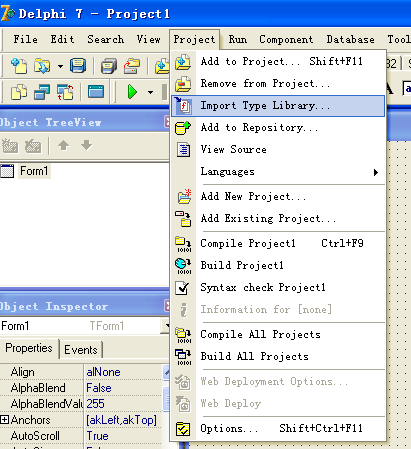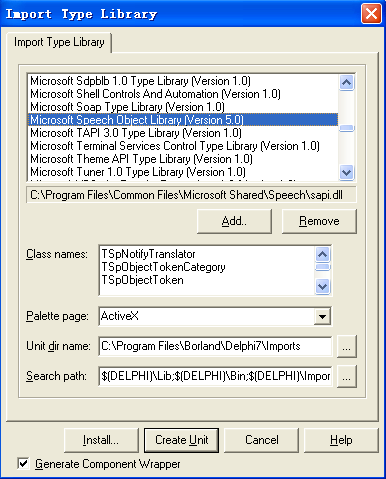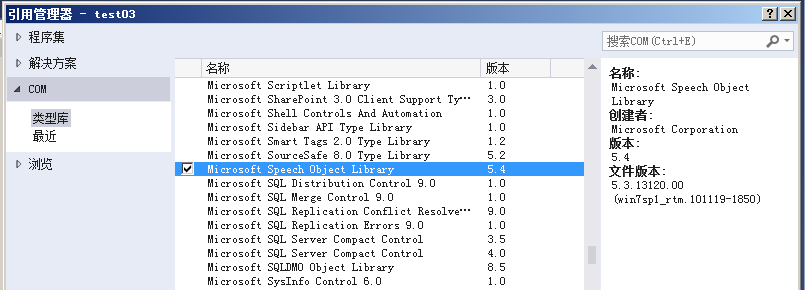1、http://blog.csdn.net/u010176014/article/details/47428595
2、家里 Win7x64 安装“微软TTS5.1语音引擎(中文).msi”之后,搜索"sapi.dll"的结果:

3、公司 Win7x64 没装“微软TTS5.1语音引擎(中文).msi”,搜索"sapi.dll"的结果:

4、VMWare XP sp3 也自带 sapi.dll

5、ZC
上面3个场景中,安装了“微软TTS5.1语音引擎(中文).msi”之后,在 C盘 都没有搜索到“Interop.SpeechLib.dll”... ...
6、另一个参考资料:
http://www.cnblogs.com/ac1985482/p/3905173.html
7、Where i can get this interop.speechlib.dll file in c#
http://www.codeproject.com/Questions/699504/Where-i-can-get-this-interop-speechlib-dll-file-in
Right click the project -> Add Reference -> Select COM tab -> select "Microsoft Speech Object Library" -> click ok
this will gives you the dll with following version info ( right click -> properties )..
name:Interop.SpeechLib
description : Microsoft Speech Object Library
path: your project loctationDebugInterop.SpeechLib.dll
8、ZC: 貌似 不安装微软TTS5.1语音引擎(中文).msi,也有相关内容。
8.1、vmware xp sp3(这里的版本是 5.0)


8.2、Win7x64 vs2013(这里的版本是 5.4)

9、
10、
100、Delphi播放WAV
http://www.cnblogs.com/micki/archive/2009/12/21/1629207.html
一般通过两种方式来实现: 1.调用MessageBeep(MB_OK)方法,播放系统声音,其中MB_OK可以是MB_ICONASTERISK,MB_ICONEXCLAMATION,MB_ICONHAND,MB_ICONQUESTION等 2.调用sndPlaySound('d:start.wav', SND_NODEFAULT Or SND_ASYNC Or SND_LOOP),需要引入MMSystem系统单元。可以将声音文件嵌入可执行文件里并: a.创建新文件,重命名为sound.rc,输入start wave d:start.wav,保存; b.使用Delphi安装目录bin下的BRCC32.EXE将rc文件转换成res文件,在命令行中输入brcc32 -32 d:start.wav(brcc32已加入环境变量,也可以将路径定位到声音文件所在目录),生成sound.res; c.将sound.res放在程序可执行文件生成目录,在程序中加入: @新建系统变量soundData: Pointer @implementation下加入: {$R sound.res} @程序最后加入: initialization soundData:= Pointer(FindResource(hInstance, 'start', 'wave')); if tada <> nil then begin soundData:= Pointer(LoadResource(hInstance, HRSRC(soundData))); if soundData<> nil then soundData:= LockResource(HGLOBAL(soundData)); end; @在适当的地方调用:sndPlaySound(soundData, SND_MEMORY or SND_NODEFAULT or SND_ASYNC);
101、